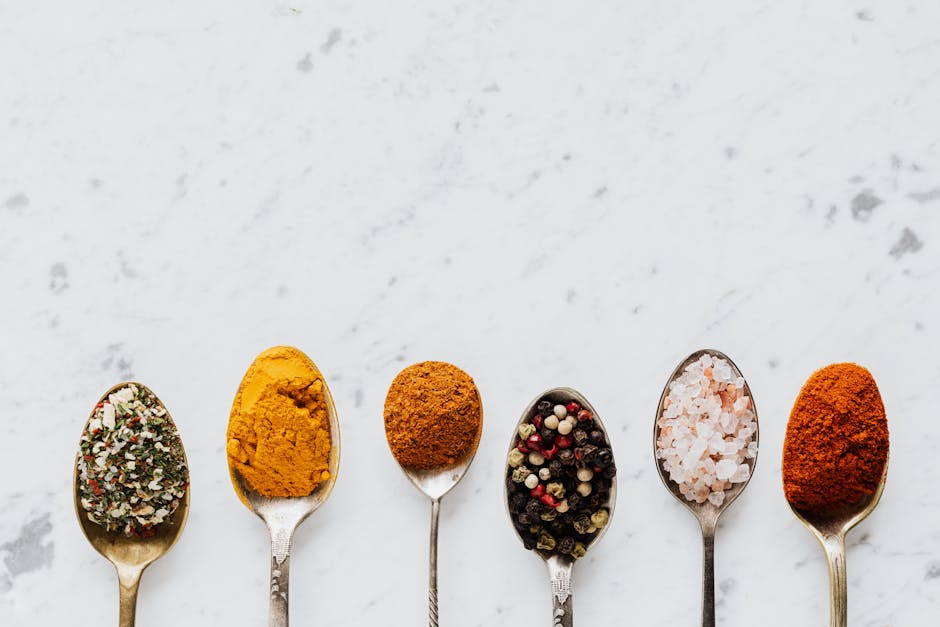Cook with Color: Bright Ingredients Boost Nutrition and Mood
Cooking with vibrant and colorful ingredients isn't simply about aesthetics; it has the potential to enhance both our health and our emotions. Imagine plating a dish that is a feast for both the eyes and the palate! From deep reds to sunny yellows and verdant greens, the hues of our food can brighten our spirits, nourish our bodies, and spark creativity in the kitchen. This article will explore how infusing color into your meals can transform not only the look of your dishes but also their nutritional value and emotional impact.
The Psychology of Color in Food

Our perception of color is deeply ingrained and can significantly influence mood and choices. Just think about it – when you see a plate full of colorful vegetables, it seems more inviting and delicious than a bland, monotone meal. The psychology of color plays a crucial role in our eating experiences and decisions. Colors evoke different emotions; for instance, yellow can energize, red can evoke passion, and green often signifies health and freshness. These associations can guide our cooking decisions and even affect our appetite.
Research indicates that the colors of fruits and vegetables correspond to specific health benefits. For example, vibrant red tomatoes are packed with lycopene, a powerful antioxidant linked to heart health. Similarly, orange foods like carrots and sweet potatoes provide beta-carotene, known for its role in maintaining healthy skin and vision. Incorporating a rainbow into your culinary creations can contribute to a well-balanced diet rich in essential nutrients.
Nutritional Benefits of Cooking with Color

Incorporating a variety of colors into your meals not only makes them visually appealing but also enhances their nutritional value. Let’s break down a few vibrant ingredients and their nutritional profiles:
-
Red: Think tomatoes, bell peppers, and strawberries. These ingredients are rich in vitamins A and C, potassium, and antioxidants that may reduce the risk of certain diseases.
-
Yellow/Orange: Foods like carrots, sweet potatoes, and corn are packed with carotenoids, vitamins, and minerals. They support immune function and skin health.
-
Green: Leafy greens like spinach and kale are notorious for being nutrient-dense, providing iron, calcium, vitamins K and C, and dietary fiber. Embracing green in your meals can aid digestion and overall wellness.
-
Blue/Purple: Blueberries, eggplants, and purple cabbage contain anthocyanins, which have been shown to support heart health and cognitive function, making these colors as beneficial as they are beautiful.
-
White/Brown: Ingredients like garlic, onions, and mushrooms may not be renowned for vibrant colors, but they contain important compounds that bolster the immune system and contribute to overall health.
By incorporating various hues into your meals, you're not just adding visual flair; you're enhancing the nutritional spectrum of your diet. To learn more about how color influences nutritional benefits, check out Cooking with Colors: Discover Nutritional Benefits & Flavor Today.
Enhancing Mood Through Colorful Cooking

Colorful cooking is more than just a trend; it’s tied to emotional well-being. The act of preparing and serving colorful meals can elevate our mood and creativity. When we engage with vibrant ingredients, we tap into the joy of creating something visually stimulating and flavorful. Here’s why cooking with color can give your emotions a boost:
Stimulating Creativity

Cooking with an array of vibrant ingredients inspires culinary creativity. Have you ever walked into a kitchen full of colorful produce and felt the urge to create something extraordinary? These bursts of color ignite our imagination. From trying a sunset-hued roasted vegetable medley to creating a bright salad with edible flowers, the possibilities are endless.
Fostering Mindfulness

The process of cooking can also be a form of mindfulness. Selecting and preparing colorful ingredients allows us to connect with our food. Taking the time to appreciate the texture and hue of each component can enhance not only our cooking experience but also our mental state. By focusing on the colors and their combinations, we can release stress and anxiety while finding joy in the simple act of preparing a meal.
Creating Shareable Experiences

Colorful food is inherently more engaging. When we create dishes that look good, we’re more inclined to share them, whether with family, friends, or even on social media. Inviting others to share in the joy of cooking can strengthen social bonds, which in turn positively affects our mood.
For more insights on how mood influences our cooking choices, visit Flavors of Emotion: How Mood Influences Cooking Choices.
Seasonal Cooking: A Canvas for Color

One of the most rewarding aspects of cooking with color is tapping into seasonal ingredients. Each season brings its own palette of colorful foods that not only taste better but also reflect the nutritional needs our bodies seek throughout the year.
Spring Vibes

As nature awakens, so does the abundance of colorful produce. Think of fresh greens like asparagus and peas, alongside pink radishes and vibrant strawberries. These energizing colors signal rejuvenation, making spring the perfect opportunity to indulge in light, fresh dishes.
Summer Festivities

Summer brings a rainbow of fruits and vegetables. Imagine vibrant corn, peppers, tomatoes, and berries. This is the time for grilling colorful kebabs or crafting refreshing salads bursting with color and flavor like a Mediterranean tabbouleh.
Autumn Harvest

As the air cools, the colors shift to browns, oranges, and yellows. Pumpkins, squashes, and apples dominate autumn culinary experiences. Embrace hearty soups and stews that warm the heart while celebrating the beauty of the harvest.
Winter Warmth
In winter, root vegetables take center stage. Think roasted beets, carrots, and parsnips. The colors may seem muted, but they burst with flavor and nutrition. A rainbow winter dish might include a hearty vegetable soup enriched with fresh herbs for a pop of brightness.
To learn more about seasonal cooking, check out Seasonal Kitchen Symphonies: Cooking for Your Mood and Weather.
Practical Tips for Cooking with Color
To maximize the benefits of cooking with color, consider these practical tips that aim to elevate your culinary experience:
1. Create a Color Wheel
Visually organize the colors of the ingredients you commonly use. This can inspire you to cook dishes that embrace a variety of colors, ensuring you include a spectrum of nutrients in your meals.
2. Explore Unique Ingredients
Challenge yourself to try new fruits and vegetables. Seek local farmer's markets or specialty stores where you might find unusual ingredients that can spice up your dishes and enhance their visual appeal.
3. Use Cooking Techniques to Enhance Colors
Certain cooking methods can enhance the natural colors of your ingredients. Steaming vegetables can help retain their vibrant hues, while roasting can caramelize their sugars, deepening their flavors and colors.
4. Mix and Match for Balance
When planning a meal, aim for a balance of colors, textures, and flavors. This not only enhances the visual appeal but also ensures a range of nutrients. Pair creamy yellow corn with bright green zucchini for a burst of color in one dish.
5. Embrace Edible Flowers
Consider integrating edible flowers into your cooking. Not only are they visually stunning, but they also have unique flavors and can offer various health benefits. They are a perfect way to crown your colorful dishes!
For even more culinary creativity ideas, explore Cooking as a Canvas: Create Edible Art with Flavor and Color.
Infusing Flavor Through Color
While discussing the importance of color, one cannot overlook the powerful interplay of color and flavor. Choosing colorful ingredients often correlates with heightened flavor experiences.
Flavor Pairing
Understanding how colors complement each other can inform your flavor pairings. For instance, combining sweet, juicy red strawberries with lush dark greens results in not just a feast for the eyes but a symphony of flavors. Explore bold color combinations and allow your palate to discover new favorites.
Colorful Spices
Don’t forget about spices! Turmeric adds a brilliant yellow hue and has been shown to possess anti-inflammatory properties. Similarly, vibrant saffron can elevate the aesthetics of your dishes and offer aromatic depth.
Artistry on a Plate
Presenting your meals as a work of art can spark joy not only for the chef but also for the diners. Layer colorful ingredients in a visually appealing way, creating dishes that are as satisfying to assemble as they are to consume.
Flavor Science: A Deeper Dive
Color and flavor are intricately connected. The way food is perceived can significantly influence taste. Neuroscientific studies suggest that the colors we see can impact our palate—this fact showcases the richness of the sensory experience involved in cooking and eating. When we understand the science behind this connection, we can take our cooking to new heights.
For more insights into this fascinating topic, visit Savory Soundscapes: How Music Transforms Your Culinary Experience.
Final Thoughts
Cooking with colorful ingredients is more than an artistic endeavor; it is a holistic approach to nourishing our bodies and souls. By embracing the beauty of color, we not only create stunning dishes but also unlock a treasure trove of nutrients and emotional benefits. The next time you step into the kitchen, let your creativity flow and allow color to guide your culinary adventure, enhancing your meals in every aspect. Dive into your pantry, explore seasonal produce, and create vibrant meals that can transform your feelings and elevate your health.
Be sure to remember the colors inside and outside of the kitchen—each meal is an opportunity to express yourself and nourish those you love. And don’t forget to share your colorful creations with the world!



